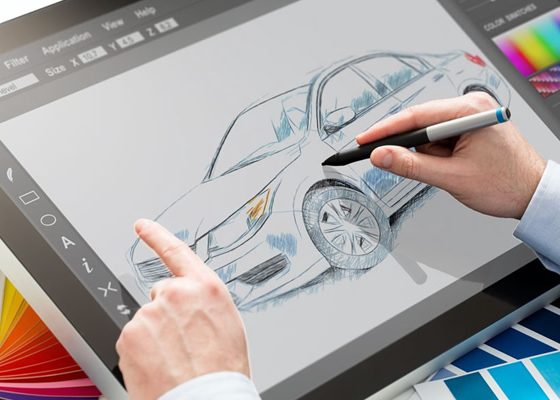3D printing, also known as additive manufacturing, represents a technological revolution that has significantly altered the way we conceive and create objects. It’s a journey from digital bits to tangible forms. In this article, we will explore the intricacies of 3D printing, its evolution, applications across industries, challenges, and the future it promises.
Introduction
Defining 3D Printing
3D printing, or additive manufacturing, is a process of constructing three-dimensional objects from a digital file. It differs fundamentally from traditional subtractive manufacturing methods, such as milling or carving, which involve removing material to create an object. Instead, 3D printing adds material layer by layer to form the final product.
A Brief History of 3D Printing
The concept of 3D printing dates back to the 1980s, with Charles Hull’s invention of stereolithography. It gained industrial prominence in the early 2000s, and recent advances have made it more accessible and cost-effective.
The Evolution of Printing
Traditional Printing Methods
Before the advent of 3D printing, traditional printing methods like offset and letterpress ruled the industry. These techniques were primarily two-dimensional, suited for flat surfaces and reproducing text and images on paper.
Digital Printing Technologies
Digital printing, which came before 3D printing, introduced a shift towards computer-generated images. It enabled precise and high-quality printing on various materials, but still, the realm was two-dimensional.
The Emergence of 3D Printing
The arrival of 3D printing introduced a paradigm shift. It allowed for the creation of three-dimensional objects, making it a game-changer in manufacturing and design. The process begins with a digital design, often created using Computer-Aided Design (CAD) software.
How 3D Printing Works
The Basics of Additive Manufacturing
Additive manufacturing involves layering material, such as plastics, metals, or ceramics, to build an object from the ground up. The 3D printer interprets the digital design and deposits material layer by layer, fusing each to the previous one.
3D Printing Materials
The choice of materials for 3D printing is extensive. Polylactic acid (PLA), acrylonitrile butadiene styrene (ABS), and nylon are commonly used in Fused Deposition Modeling (FDM) printers, while Stereolithography (SLA) may use photopolymers. Metals like titanium, aluminum, and stainless steel are also employed in industrial 3D printing.
Types of 3D Printing Technologies
Several 3D printing technologies exist, each with its unique advantages and applications. These include Fused Deposition Modeling (FDM), Stereolithography (SLA), Selective Laser Sintering (SLS), and more. Each technology has specific use cases, from rapid prototyping to creating intricate, customized parts.
Applications of 3D Printing
Healthcare and Medical
In the medical field, 3D printing is nothing short of revolutionary. It has enabled the creation of customized prosthetics, orthopedic implants, and even life-saving organ transplants. Bioprinting, a cutting-edge application, involves layering living cells to generate functional human tissue.
Automotive and Aerospace
The automotive and aerospace industries leverage 3D printing for lightweight, high-strength components. Prototyping and rapid design iteration have become more cost-effective, reducing lead times and material waste.
Consumer Products
From personalized phone cases to unique jewelry, consumer products are now customizable. This level of individualization would have been unimaginable before 3D printing became accessible.
Architecture and Construction
3D printing has opened new horizons in architecture and construction. It allows for the creation of complex building components with precise geometries. Some even experiment with 3D printing houses, offering sustainable and cost-effective housing solutions.
Art and Fashion
In the art world, 3D printing is a canvas for creativity. Artists explore the boundaries of form and function, creating sculptures, installations, and even wearable fashion pieces that push the limits of design.
Advantages of 3D Printing
Customization and Personalization
3D printing thrives on customization. Whether it’s a personalized phone case or a tailored medical implant, the ability to create unique items is one of its chief strengths.
Rapid Prototyping
Traditional prototyping could take weeks or months, but 3D printing allows for rapid iterations. Design changes are as simple as modifying the digital model, reducing development times considerably.
Reduced Material Waste
Unlike traditional manufacturing, where material is often cut away or discarded, 3D printing is additive. It uses only the material required for the object, significantly reducing waste.
Complex Geometries
3D printing can produce complex geometries that traditional methods struggle to replicate. Intricate lattice structures or organic shapes are easily achievable.
On-Demand Production
The on-demand nature of 3D printing means that products can be manufactured as needed, reducing inventory costs and enabling just-in-time production.
Challenges in 3D Printing
Cost and Accessibility
While 3D printers have become more affordable, high-quality industrial machines remain expensive. Accessibility to these machines and the necessary expertise can be a barrier.
Quality Control
Maintaining consistent quality in 3D printing can be challenging. Variables like temperature, layer adhesion, and material quality must be carefully managed.
Intellectual Property Concerns
With the ease of digital file sharing, intellectual property issues have arisen. Protecting designs and enforcing copyright becomes more complex in a digital, decentralized landscape.
Environmental Impact
3D printing, especially with plastics, can raise environmental concerns. The disposal of unused materials and energy consumption in the printing process need attention.
The Role of 3D Printing in Modern Industry
The Impact on Supply Chains
3D printing has the potential to disrupt traditional supply chains by enabling localized production. This reduces the need for long-distance shipping and warehousing.
Mass Customization and Local Manufacturing
The concept of mass customization, offering personalized products at scale, is now feasible with 3D printing. Local manufacturing facilities can produce goods tailored to regional needs.
3D Printing in Healthcare
Prosthetics and Orthopedics
Customized prosthetic limbs and orthopedic implants enhance the quality of life for many. Patients receive devices designed to fit them precisely.
Organ Transplants and Bioprinting
Bioprinting holds the promise of creating human organs for transplantation. While still in the experimental stage, it has the potential to save countless lives.
Dental Applications
3D printing is transforming the dental industry, with the fabrication of crowns, bridges, and even orthodontic devices becoming more efficient and accurate.
3D Printing in Aerospace and Automotive
Lightweight Parts and Components
The weight reduction achieved through 3D printing is crucial in aerospace, where every pound saved translates into fuel savings. In the automotive industry, lightweight components improve fuel efficiency.
Prototyping and Design
Prototyping and design in these industries have benefited immensely. Engineers can quickly iterate and test designs, reducing development times.
Space Exploration
3D printing has a significant role in space exploration, enabling the manufacturing of parts and tools on-site, reducing the need to transport everything from Earth.
Consumer 3D Printing
Home 3D Printers
Home 3D printers are now available, allowing enthusiasts and hobbyists to create their designs in the comfort of their homes.
DIY Projects and Hobbies
3D printing has inspired countless DIY projects and hobbies, from custom figurines to functional gadgets.
3D Printing in Architecture and Construction
Building Components
3D printing is changing the way we construct buildings, with components like walls and columns being printed on-site.
Sustainable Construction
By reducing waste and using sustainable materials, 3D printing offers a more eco-friendly approach to construction.
Innovative Designs
Architects are pushing boundaries with innovative designs that were previously impossible to construct.
3D Printing in Art and Fashion
Sculptures and Art Installations
Artists have embraced 3D printing to create intricate sculptures and installations, pushing the boundaries of what is possible.
Customized Fashion Pieces
Fashion designers are using 3D printing to craft unique and personalized garments that challenge traditional fashion norms.
Creative Possibilities
The creative possibilities in the art and fashion world are endless with 3D printing, where imagination knows no bounds.
The Impact of 3D Printing on Education
STEM Education
3D printing has found its way into educational institutions, enriching STEM programs and inspiring the next generation of engineers and designers.
Classroom Applications
Teachers are incorporating 3D printing into the classroom, enhancing learning by allowing students to bring their ideas to life.
Skills Development
Students are gaining valuable skills in 3D modeling, design, and problem-solving through hands-on experiences with 3D printing.
3D Printing in Research and Development
Prototyping and Testing
Researchers use 3D printing extensively for prototyping and testing, reducing costs and lead times in the development of new products.
Scientific Advancements
In fields like materials science and biology, 3D printing is facilitating scientific breakthroughs by enabling the creation of intricate research tools.
Space and Exploration
3D printing is essential in space research, enabling astronauts to fabricate tools and spare parts aboard spacecraft and space stations.
The Future of 3D Printing
Emerging Technologies
The future holds exciting prospects, such as continuous 3D printing and the development of even more advanced materials.
Industry Growth Predictions
The 3D printing industry is expected to continue its growth trajectory, impacting various sectors and creating new opportunities.
Challenges and Opportunities
As 3D printing advances, it will face challenges, from regulatory hurdles to material limitations, but these obstacles also bring opportunities for innovation.
Sustainability and 3D Printing
Reduced Material Waste
3D printing’s additive nature results in minimal material waste, aligning with sustainability goals to reduce environmental impact.
Localized Manufacturing
By producing items closer to the point of consumption, 3D printing reduces the carbon footprint associated with shipping goods worldwide.
Sustainable Materials
The development of sustainable 3D printing materials, including biodegradable plastics, aligns with environmental consciousness.
Intellectual Property and 3D Printing
Copyright Issues
3D printing has led to complex copyright issues as digital files can be easily shared and replicated. Protecting intellectual property is a growing concern.
Digital Rights Management
In response to IP concerns, digital rights management (DRM) solutions are being developed to control access to 3D printing files.
Legal Implications
The legal landscape surrounding 3D printing is evolving, with ongoing debates about copyright, patent infringement, and liability.
Accessibility of 3D Printing
Open Source 3D Printing
The open-source 3D printing movement has democratized the technology, making designs and software freely available.
Community and Maker Spaces
Community-driven spaces and maker communities have emerged, providing access to 3D printers and knowledge sharing.
Educational Initiatives
Educational institutions are introducing courses and programs that teach 3D printing skills, further expanding accessibility.
Personal 3D Printing Projects
Success Stories
Countless individuals and groups have achieved remarkable success with 3D printing, from designing life-saving medical devices to creating innovative products.
DIY Innovations
The maker spirit is thriving, with people worldwide using 3D printing to invent, innovate, and bring their ideas to life.
The Role of Government and Regulation
FDA Approval in Healthcare
The U.S. Food and Drug Administration (FDA) plays a vital role in regulating 3D-printed medical devices, ensuring their safety and efficacy.
Aviation and Safety Regulations
In aviation, regulatory bodies like the FAA are actively addressing safety concerns associated with 3D-printed aircraft components.
The Human Element in 3D Printing
Design and Creativity
Human ingenuity, creativity, and design expertise remain central to the 3D printing process, from initial concepts to final products.
Skilled Workforce
The industry relies on a skilled workforce to operate, maintain, and innovate with 3D printing technology.
Global Case Studies in 3D Printing
Highlighting Successful Implementations
Several organizations worldwide have harnessed 3D printing to revolutionize their processes and offerings, from healthcare breakthroughs to architectural marvels.
3D Printing in a Post-Pandemic World
The Impact of COVID-19
The COVID-19 pandemic accelerated the adoption of 3D printing for producing personal protective equipment (PPE), ventilator components, and medical supplies, showcasing its agility in times of crisis.
Conclusion
In Conclusion
3D printing, from its modest beginnings to its present-day prominence, has illuminated the potential for transformative change in diverse industries. It epitomizes the shift from pixels to tangible objects, expanding our horizons and sparking innovation. The future of 3D printing holds promise and challenges, and its evolution continues to captivate the world.

